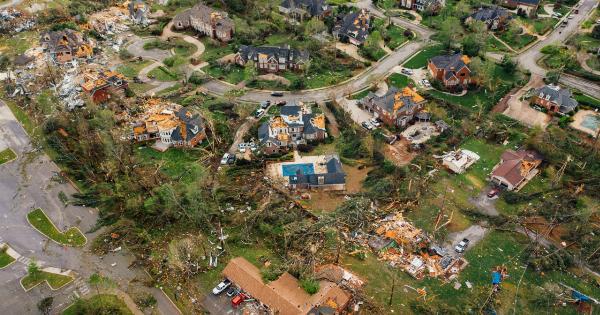Losing weight can be a challenging journey for many individuals. It requires dedication, discipline, and the right combination of diet and exercise.
While there are countless diets out there, some are more intense than others when it comes to rapid and effective weight loss. In this article, we will explore one of the most intense diets that has been proven to deliver impressive results in a short amount of time.
The Ketogenic Diet
The ketogenic diet, often referred to simply as the keto diet, has gained significant popularity in recent years due to its ability to promote rapid weight loss.
This diet is based on the principle of consuming high amounts of fat, moderate protein, and very low carbohydrates. The aim is to force the body into a state of ketosis, where it relies on fat for energy instead of carbohydrates.
How Does the Keto Diet Work?
When you drastically reduce your carbohydrate intake, your body switches from using glucose (derived from carbs) as its primary source of energy to using ketones (produced by the liver from stored fat) instead.
This metabolic switch is what triggers weight loss on the keto diet. By minimizing carb intake, you effectively deplete your glycogen stores and force your body to burn fat for fuel.
Benefits of the Keto Diet
1. Rapid Weight Loss: The keto diet is renowned for its ability to promote rapid weight loss. Since the body is constantly in a state of fat-burning, individuals can experience significant weight loss within a short period.
2. Appetite Suppression: High fat and protein intake, combined with low carbohydrates, can help you feel fuller for longer. This can reduce cravings and prevent overeating, making it easier to stick to your weight loss goals.
3. Increased Mental Clarity: Many people on the keto diet report experiencing improved mental focus and clarity. This is thought to be due to the steady supply of ketones to the brain, which provides a more stable source of energy compared to glucose.
Potential Drawbacks of the Keto Diet
While the keto diet can be highly effective for weight loss, it is important to consider potential drawbacks before embarking on this intense dietary approach.
1. Keto Flu: Some individuals may experience flu-like symptoms, including fatigue, dizziness, and irritability, during the initial phase of the diet.
This is commonly known as “keto flu” and is a result of the body adapting to using ketones for energy.
2. Nutrient Deficiencies: A strict keto diet restricts several food groups, which may result in nutrient deficiencies if not carefully managed.
It is crucial to ensure an adequate intake of vitamins and minerals through supplementation or careful food selection.
3. Difficulty Sustaining: The keto diet is not easy to maintain in the long term due to its highly restrictive nature. Many individuals find it challenging to follow, which can lead to frustration and a higher likelihood of giving up on the diet.
How to Follow the Keto Diet
1. Limit Carbohydrate Intake: To achieve and maintain ketosis, it is essential to restrict daily carbohydrate intake to approximately 20-50 grams, depending on individual factors such as activity level and metabolism.
2. Consume Moderate Protein: Protein is an essential nutrient for maintaining muscle mass and supporting various bodily functions. However, excessive protein intake can potentially kick you out of ketosis.
Aim for a moderate protein intake of around 20-25% of your daily calorie intake.
3. Increase Healthy Fat Consumption: The keto diet relies heavily on healthy fats as its primary source of energy. Incorporate foods such as avocados, nuts, seeds, olive oil, and fatty fish into your meals to ensure an adequate fat intake.
4. Stay Hydrated: Adequate hydration is crucial on the keto diet, as it helps support various bodily functions.
Aim to drink at least 8 cups of water per day and consider incorporating electrolyte-rich beverages or supplements to prevent electrolyte imbalances.
FAQs
1.
Can I Eat Fruit on the Keto Diet?
While traditional fruits are generally high in carbohydrates, certain berries like blueberries and raspberries can be consumed in moderation while following the keto diet. Always monitor your carbohydrate intake and adjust accordingly to fit within your daily limits.
2. Can I Drink Alcohol on the Keto Diet?
Alcohol can hinder your progress on the keto diet, as many alcoholic beverages contain high amounts of carbohydrates.
Additionally, alcohol is metabolized differently in the body, which can disrupt ketosis. If you choose to drink alcohol, opt for low-carb options like spirits mixed with sugar-free alternatives or dry wines.
3. How Long Does It Take to Get Into Ketosis?
The time it takes to enter ketosis varies from person to person.
It generally takes anywhere from 2 to 7 days of strict carbohydrate restriction to deplete glycogen stores and enter ketosis. Monitoring your carbohydrate intake and testing your ketone levels can help determine when you’ve reached ketosis.
4. Can I Exercise While on the Keto Diet?
Yes, exercise can be incorporated into a keto lifestyle.
However, it is important to note that during the initial adaptation phase, some individuals may experience a temporary decrease in performance and energy levels. As your body becomes keto-adapted, your energy levels should normalize, and physical performance can improve.
Conclusion
The ketogenic diet is undoubtedly one of the most intense diets for rapid and effective weight loss. Its ability to promote fat-burning through ketosis has made it a popular choice among individuals seeking quick weight loss results.
However, it is essential to consider the potential drawbacks and ensure proper nutrient intake. As with any diet, consulting with a healthcare professional is recommended before starting the keto diet.
























